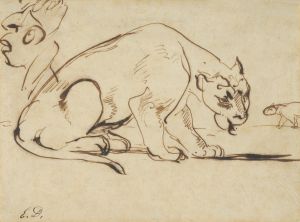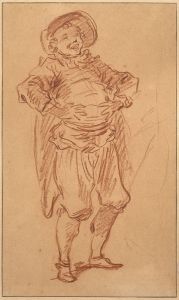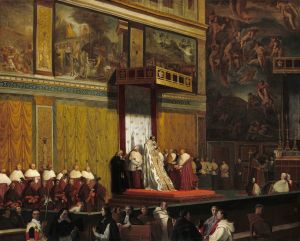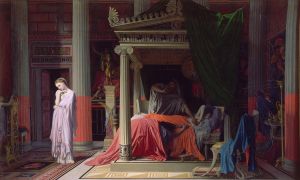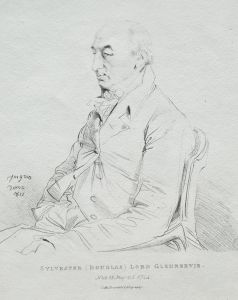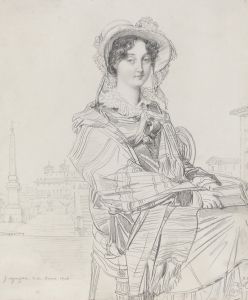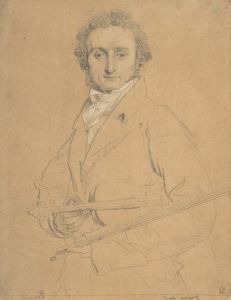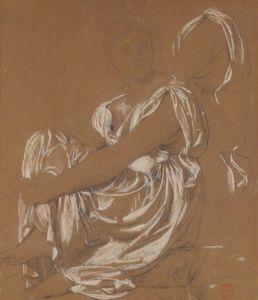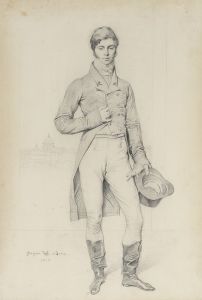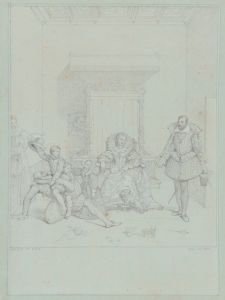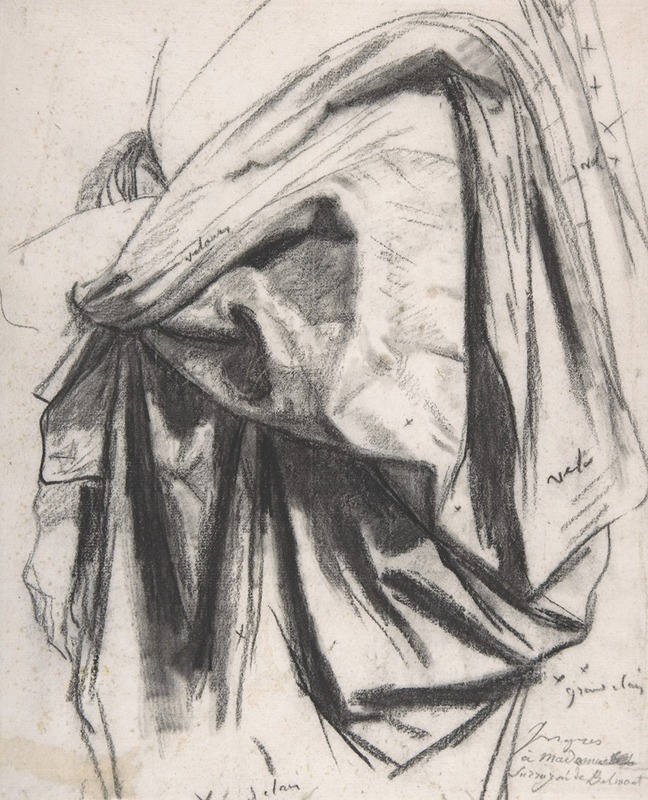
Study for the Drapery of Molière in the ‘Apotheosis of Homer’
A hand-painted replica of Jean Auguste Dominique Ingres’s masterpiece Study for the Drapery of Molière in the ‘Apotheosis of Homer’, meticulously crafted by professional artists to capture the true essence of the original. Each piece is created with museum-quality canvas and rare mineral pigments, carefully painted by experienced artists with delicate brushstrokes and rich, layered colors to perfectly recreate the texture of the original artwork. Unlike machine-printed reproductions, this hand-painted version brings the painting to life, infused with the artist’s emotions and skill in every stroke. Whether for personal collection or home decoration, it instantly elevates the artistic atmosphere of any space.
Jean Auguste Dominique Ingres, a prominent French Neoclassical painter, is renowned for his meticulous attention to detail and his dedication to the classical tradition. Among his numerous works, "Study for the Drapery of Molière in the ‘Apotheosis of Homer’" stands out as a testament to his skill in rendering fabric and his commitment to preparatory studies.
The "Apotheosis of Homer" is a grand painting completed by Ingres in 1827, commissioned for the ceiling of the Louvre's Musée Charles X. This monumental work celebrates the legendary Greek poet Homer, depicting him being crowned by the personification of Victory, surrounded by an assembly of illustrious figures from the arts and literature. The painting is a quintessential example of Ingres' Neoclassical style, characterized by its clarity, order, and idealized beauty.
The study in question focuses on the drapery of Molière, the famous 17th-century French playwright and actor, who is one of the many figures included in the "Apotheosis of Homer." Ingres was known for his rigorous preparatory process, often creating numerous studies to perfect the composition and details of his paintings. This particular study highlights his dedication to capturing the intricate folds and textures of fabric, a skill that was highly valued in Neoclassical art for its ability to convey realism and enhance the overall composition.
Ingres' studies were typically executed in pencil or graphite, mediums that allowed him to achieve fine detail and subtle gradations of tone. In the "Study for the Drapery of Molière," Ingres meticulously renders the flowing lines and complex folds of the fabric, demonstrating his understanding of how light interacts with different surfaces. This attention to detail not only served to enhance the realism of the final painting but also reflected the Neoclassical emphasis on harmony and proportion.
The inclusion of Molière in the "Apotheosis of Homer" underscores the painting's theme of celebrating great literary and artistic figures from history. By placing Molière among such esteemed company, Ingres acknowledges the playwright's significant contributions to French literature and theater. The study of Molière's drapery, therefore, is not merely a technical exercise but also a reflection of Ingres' respect for the cultural heritage represented by the figures in his painting.
Ingres' preparatory studies, including this one, are valuable not only for their artistic merit but also for the insight they provide into his creative process. They reveal the careful planning and consideration that went into his compositions, as well as his commitment to achieving a high level of craftsmanship. Today, these studies are appreciated both as works of art in their own right and as important documents of Ingres' artistic practice.
In summary, "Study for the Drapery of Molière in the ‘Apotheosis of Homer’" exemplifies Jean Auguste Dominique Ingres' mastery of detail and his dedication to the Neoclassical ideals of beauty and order. Through this study, Ingres not only honed his technical skills but also paid homage to the enduring legacy of one of France's greatest playwrights.





